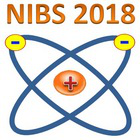Speaker
Glynnis Mae Saquilayan
(National Institutes for Quantum and Radiological Science and Technology)
Description
The development of a high power negative ion beam accelerator is one of the key aspects in the neutral beam injection system (NBI) for fusion reactors. For example, the ITER NBI requires 1 MeV deuterium negative ion (D-) beams with a current density of 200 A/m2 and a divergence angle of < 7 mrad. Such high power beam accelerations have been demonstrated in a MeV test facility (MTF) in QST for the ITER NBI. In the beam acceleration tests at high negative ion beam energies of 1 MeV, unknown divergent beam components which is unfavorable for beam transport, so-called beam halo, is always observed in the beam footprint. Though the beam emittance is an important parameter that offers valuable information relating to the formation of the beam halo and poor beam optics, the conventional emittance measurement method is not applicable for such high power beams. In this study, the measurement methods for the emittance of the 1 MeV high power beams are being newly developed to understand the characteristics of the ion beam for maintaining the sufficient emittance of the negative ion accelerator.
As the material to measure this high power beam, a one-dimensional carbon fiber composite (CFC) target is selected, whose melting point is 2000°C. Measurement methods being studied are the pepperpot type and slit-collector type meters. For the pepperpot type emittance measurement, a multi-aperture CFC plate with 0.5 mm diameter pinholes is placed in front of another CFC target allowing the small portions of the beam to pass through. The temperature profile of the H- ion beamlets being projected on this CFC target are measured using an infrared camera to observe the emittance spread. The advantage of this thermal measurement is the simple configuration and lack of additional electrical components that can contribute to the noise in the signal. Another method to be tested is the slit-collector type where an array of slits produces the beamlets while collectors are arranged to scan the cross-section and measure the transverse emittance with high spatial resolution. The reliability of this electrical type of detection will offer a good comparison to the pepperpot method as to identify the key features of each measurement technique. Examining the beam emittance will also reveal the characteristics of the diverging beam components crucial to beam transport. From performance of the different emittance measurement methods, a beam diagnostics system will be proposed suitable to monitor the ITER-class negative ion beam.
Primary author
Glynnis Mae Saquilayan
(National Institutes for Quantum and Radiological Science and Technology)
Co-authors
Hiroyuki Tobari
(National Institutes for Quantum and Radiological Science and Technology)
Junichi Hiratsuka
(National Institutes for Quantum and Radiological Science and Technology)
Kazuhiro Watanabe
(National Institutes for Quantum and Radiological Science and Technology)
Dr
Mamiko SASAO
(Doshisha University)
Masahiro Ichikawa
(National Institutes for Quantum and Radiological Science and Technology)
Mieko Kashiwagi
(National Institutes for Quantum and Radiological Science and Technology)
Prof.
Motoi Wada
(Doshisha University)
Naotaka Umeda
(National Institutes for Quantum and Radiological Science and Technology)

